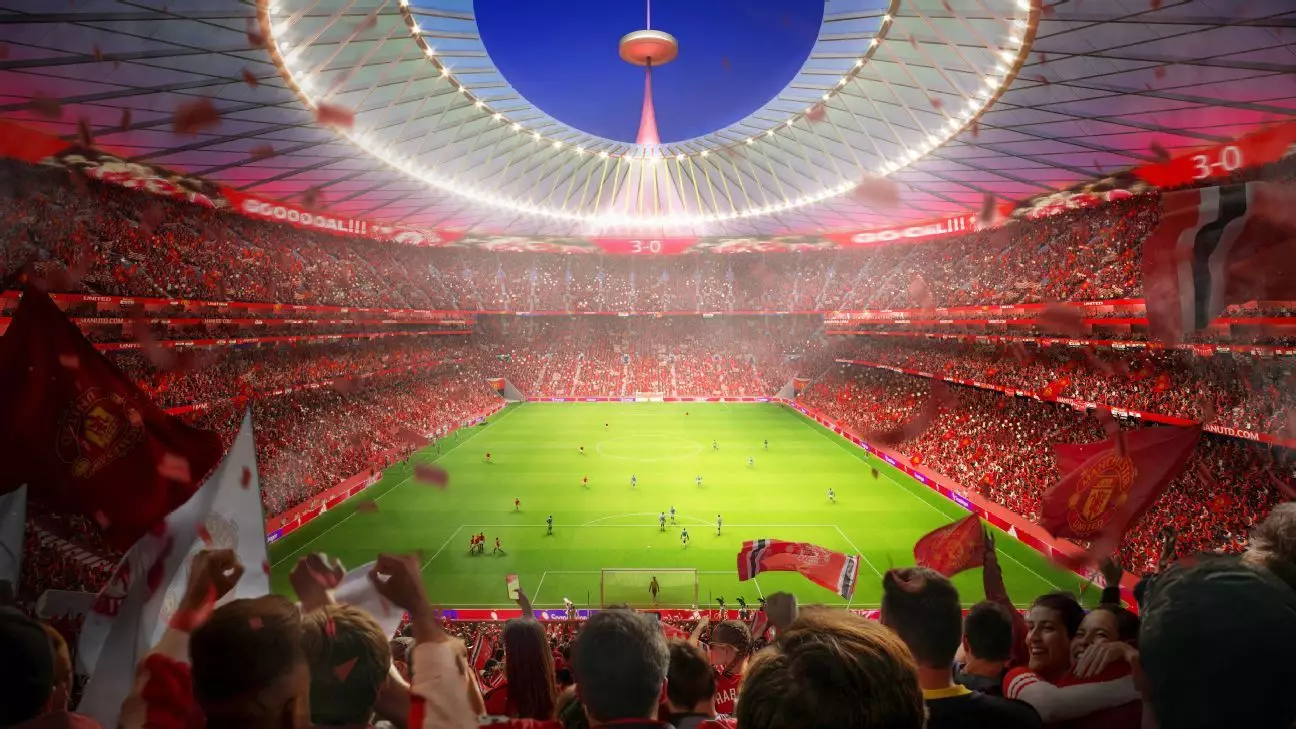In a daring ambition that echoes the spirit of Manchester United, CEO Omar Berrada has illuminated the complexities that come with the club’s much-anticipated move to a new stadium. This plan, revealing intentions to abandon the historic grounds of Old Trafford after 115 years, is laden with both hope and considerable risk. The proposed 100,000-capacity stadium comes with an eye-watering price tag of £2 billion (approximately $2.59 billion), a daunting investment that raises eyebrows, particularly in the light of the club’s recent financial losses exceeding £300 million ($388.57 million) over the last three years. Such figures provoke serious questions: Can the club truly afford to invest in a new stadium and simultaneously ensure competitive vigor on the pitch?
The parallels to Arsenal and Tottenham Hotspur’s struggles during their stadium transitions serve as sobering reminder. Both clubs faced significant competitiveness challenges while investing heavily in their new homes. Berrada himself acknowledges this precarious balancing act, indicating a potential risk that could place Manchester United at a disadvantage in the fiercely competitive football landscape. As he noted, “That is a risk,” succinctly underscoring the dilemma the club faces in maintaining squad strength while embarking on such a monumental infrastructure venture.
A Void in Financial Strategy
To complicate matters further, recent statements from co-owner Sir Jim Ratcliffe about the club’s precarious financial health paint a troubling picture. Ratcliffe warned that without decisive cost-cutting measures, the club would face a financial precipice by the end of 2025. Berrada’s reassurance that the club does not plan to seek taxpayer funding for this ambitious project is refreshing, but begs the question of where the necessary financial infusion will come from. A multitude of current strategies echoes a desperation for investor interest, heightening concerns that the long-term vision may be overshadowed by immediate fiscal instability.
The club’s efforts to recruit and fortify its squad under new coach Ruben Amorim further illuminate its precarious balance. While Berrada insists that there will be a budget for recruitment even if European qualification eludes them, this breeds skepticism about the quality of signings. The intent appears to be a focus on adaptable and versatile players who can thrive under Amorim’s desired style of play—a more dynamic, attacking philosophy. Yet the overarching fear remains: how will Manchester United maintain a competitive edge in their league while funneling substantial finances into their new stadium?
Conundrums of Transition
It’s a classic case of ambition versus practicality. As Manchester United rallies around its aspirations, it also grapples with the ramifications of its decisions. Berrada’s assertion that the development of the new stadium aims to position the club favorably for the future is reasonable, yet the question arises—at what cost? Will London’s blueprints serve as a cautionary tale, or can the Red Devils carve a successful narrative against the odds?
The lack of clarity surrounding when work will commence, dependent on planning permission and local authority efficiency, injects uncertainty into an already fragmented timeline. Speculation about a prospective move ahead of the 2030-31 season serves only to heighten the anticipation and risks disapproval among eagerly awaiting fans.
Ambition in Recruitment
In light of these convoluted financial discussions, the recruitment strategy appears to be a silver lining. Under Amorim’s stewardship, the vision for a flexible team structure seems progressive. Berrada emphasizes the need for players capable of adapting to different tactical setups, signifying an alignment with the modern game’s evolving nature. This intent to foster a team willing to embrace change suggests an underlying optimism that could resonate well with a fanbase craving success.
The boldness of entering such a transitional phase prompts a critical analysis of whether Manchester United can truly live up to its storied past while approaching a new operational paradigm. Balancing infrastructure investment with athletic competitiveness offers both a vulnerability and a potential renaissance. Ultimately, the success of the club’s grand plans hinges not merely on financial prowess, but also on the tactical astuteness that leads to triumph on match days. As the club inches towards its future, one can only hope that the complexities of ambition don’t eclipse the legacy of a footballing giant.

